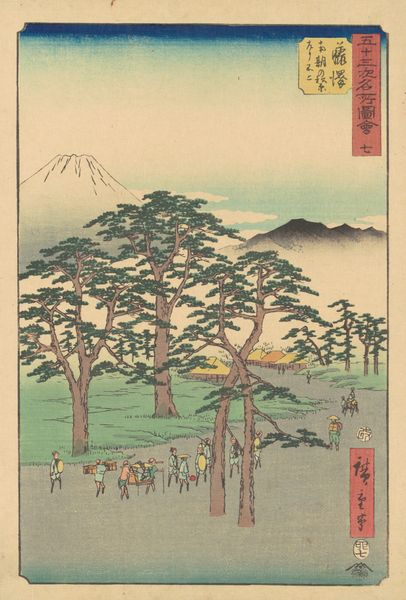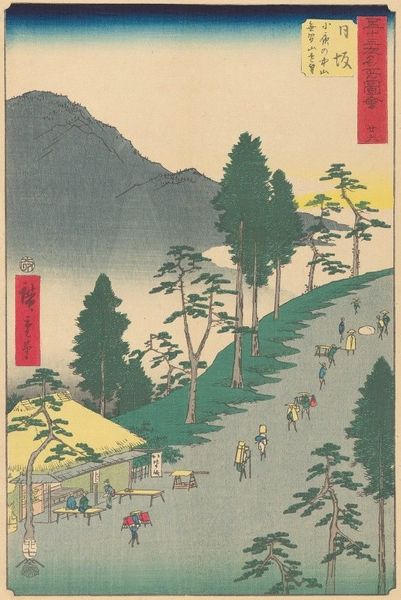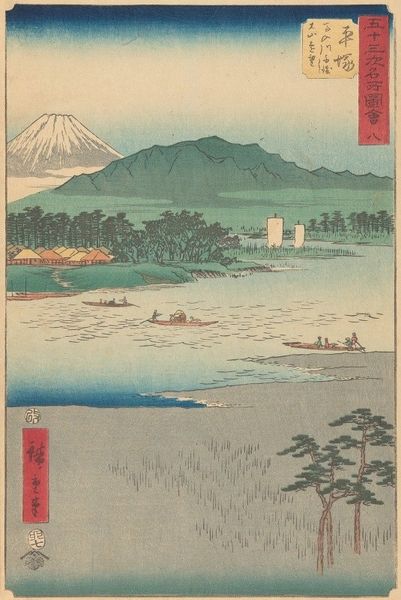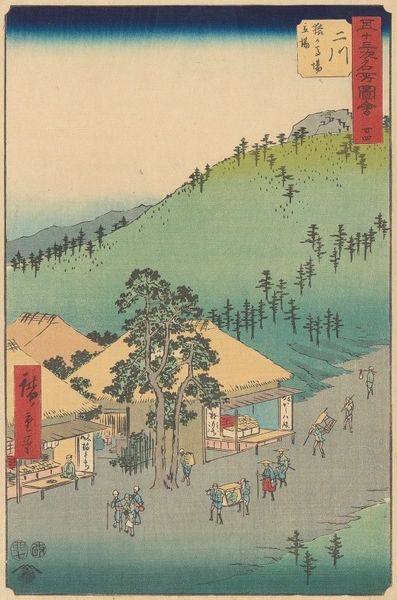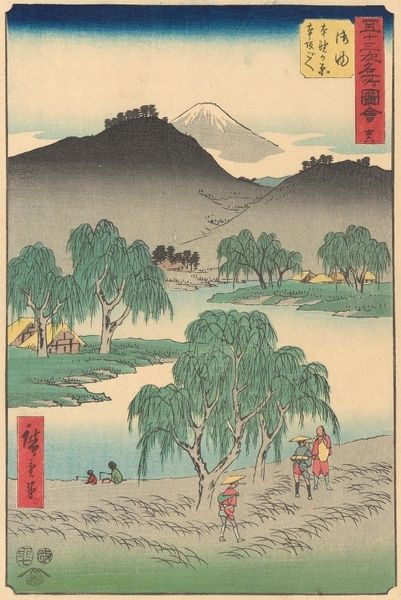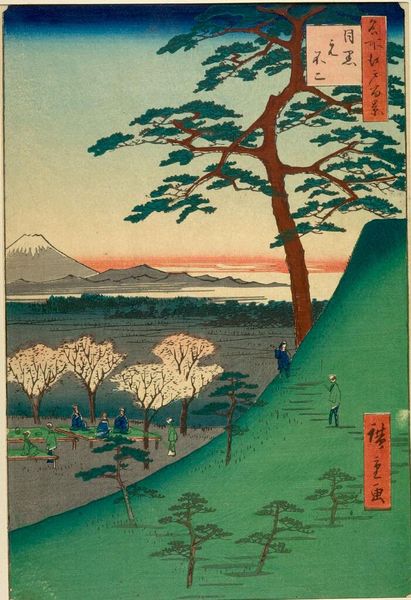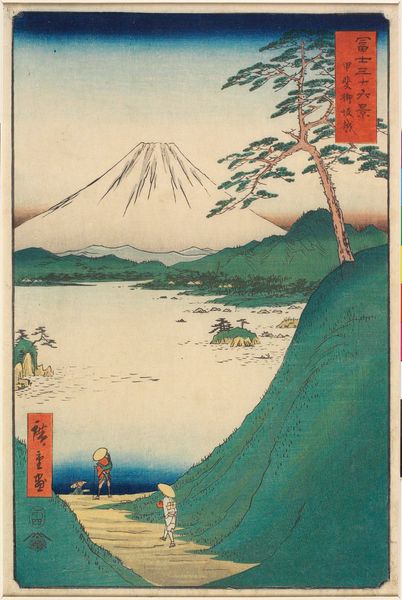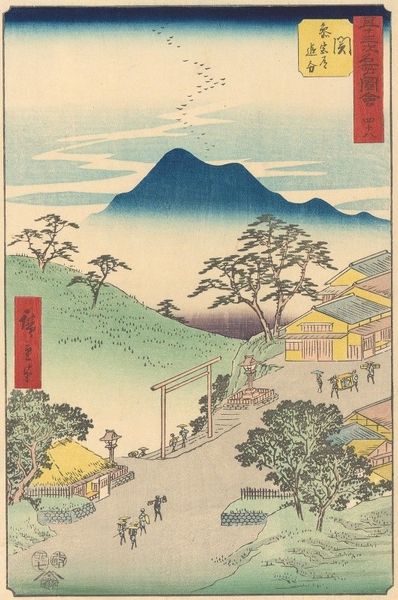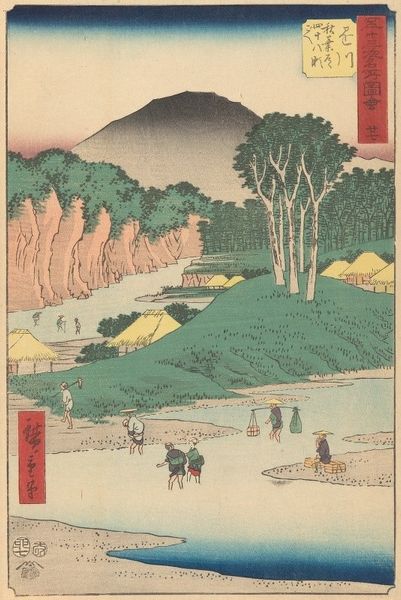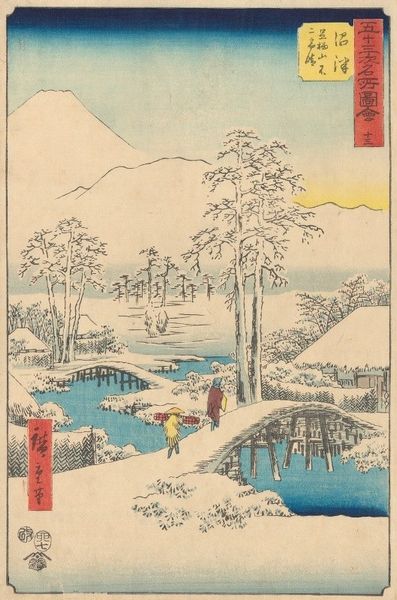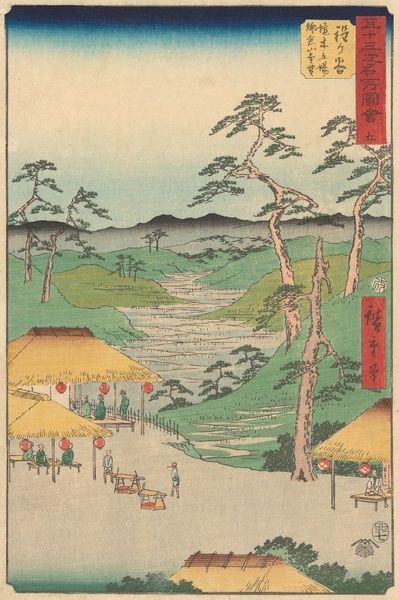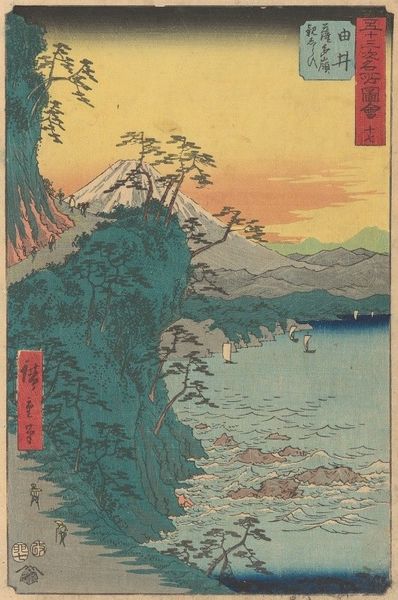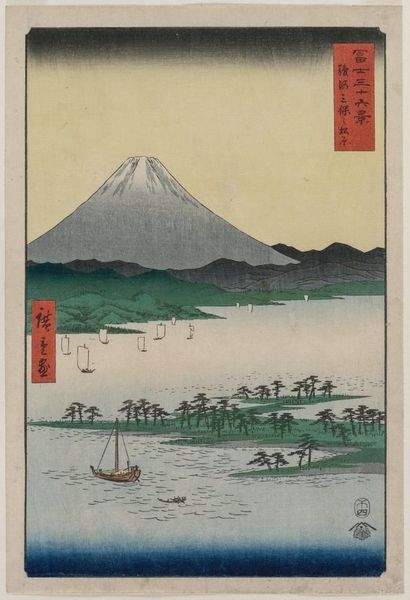
print, woodblock-print
# print
#
asian-art
#
landscape
#
ukiyo-e
#
woodblock-print
Copyright: Public Domain: Artvee
Curator: This print, "Fujisawa," by Utagawa Hiroshige, was created around 1855, and it's a woodblock print in the Ukiyo-e style. Editor: There’s an immediate feeling of gentle labor; figures strain to carry what looks like travelers on a litter, yet the scene feels peaceful, almost pastoral despite their efforts. The colours are incredibly soft, but the composition itself is quite structured. Curator: Precisely, notice the careful arrangement of elements. The towering pine trees in the foreground create a sort of screen, framing the landscape behind them, and directing our gaze towards the distant Mount Fuji, a recurring motif in Ukiyo-e prints representing the sacred and sublime. Editor: These prints served not only as representations but also as souvenirs. Look at how this reflects an increased accessibility in travel during the Edo period, highlighting the very materials used—wood, pigment, paper—all products of considerable labor and sources of intense material exchange throughout Japan. Curator: That's right. We can read it as a form of early tourism promotion. Hiroshige brilliantly manipulates perspective to draw the eye through space, moving between planes of reality within a bounded pictorial sphere. The materiality is crucial: the flat planes, bold outlines, and deliberate cropping all contribute to the composition, inviting the viewer to ponder. Editor: Absolutely. The textures created by the woodblock technique are also telling. Consider the soft graduation of color in the sky versus the precisely delineated branches. This print really speaks volumes about how artistry and craft meet at this fascinating intersection of culture, labor and trade. Curator: And the placement of text further articulates planes within the picture—signifiers stacking over an unfolding series of signifiers. It elegantly underscores a delicate play of depths. The harmony is almost mathematical, achieved by simplifying everything into near geometric forms. Editor: Examining these everyday scenes shows the deep cultural values attached to materials. Hiroshige presents the woodblock prints not as an end-product but as integral in Japan’s thriving society. That’s why the print's evocation of place also underscores the significance of what its constituent material origins are. Curator: In sum, this seemingly simple landscape encapsulates profound compositional ideas. Editor: Indeed. A valuable insight into the means of making meaning in Edo period Japan, quite literally.
Comments
No comments
Be the first to comment and join the conversation on the ultimate creative platform.
